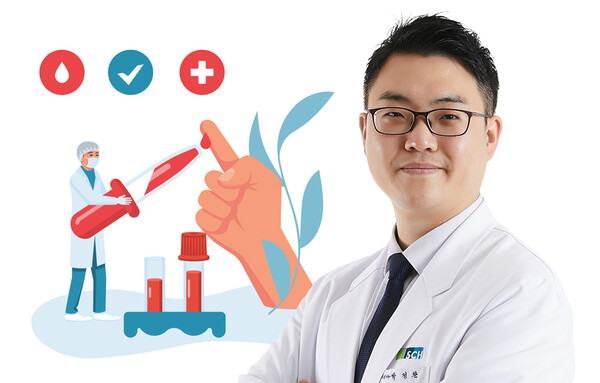Many things are returning to pre-Covid-19 days after lifting the indoor mask mandate, but one area fails to recover its previous vigor – HIV (human immunodeficiency virus) tests at public health centers.
According to a report by the Korea Disease Control and Prevention Agency (KDCA) in 2021, 443,609 HIV screening tests were conducted a year on average from 2011 to 2019, but the number plunged to 178,653 in 2020 when Covid-19 hit the nation.
That was because public health centers focused on responding to Covid-19.
Between 2020 and 2021, public health centers in Seoul suspended their HIV business and began to resume it in April 2022. In December, all 25 public health centers in the capital city resumed HIV testing.
Since it is important to detect and treat infections early through periodic tests, HIV testing in public health centers is crucial in controlling HIV infections. Korea Biomedical Review met with Professor Park Jeong-wan of the Department of Infectious Diseases at Soon Chun Hyang University Cheonan Hospital to hear his views on the need for HIV tests and other policy suggestions.

Question: Why is HIV testing important in the control of HIV infection in Korea?
Answer: Most HIV infections are asymptomatic unless accompanied by opportunistic infections, such as alveolar pneumococcal pneumonia, toxoplasmosis, or giant cell viral infection. But even if you don't have symptoms, you can spread it if exposed to the virus. The faster the diagnosis, the less transmission. HIV infection has no symptoms, so early diagnosis cannot be made unless you suspect yourself.
Q: Who needs HIV tests, and when do they need them?
A: We recommend HIV testing on high-risk groups with a high risk of virus exposure. Usually, high-risk HIV groups include sexual minorities who have sex with men and people with multiple sex partners. We recommend these high-risk groups be regularly tested for HIV.
There are no specific recommendations for the test cycle. However, if the subjects think they had risky sex, they are recommended to undergo a test about four weeks after having the sex. Before four weeks, it was a window period when the antibody was not formed. If they receive tests during this period, the test results may be negative even if the subjects are infected, so they need caution.
Rapid HIV tests or self-test kits have lower sensitivity or specificity than HIV antigen-antibody tests used for an actual diagnosis. Therefore, if HIV infection is strongly suspected, an HIV antigen/antibody test should be performed.
Q: How do you treat people who test positive in actual HIV tests?
A: We begin anti-retroviral treatment (ART) as soon as HIV infection is diagnosed. However, if HIV infection progresses to AIDS and opportunistic infections occur, there is a risk of developing immune reconstruction inflammatory syndrome (IRIS) as immunity rises after ART. Therefore, ART should be started after treating opportunistic infections to a certain extent.
During ART, we check CD4 cell levels to determine the immune status of the infected person. If the number of CD4 cells is less than 200, the risk of alveolar pneumonia increases, so they should take antibiotics, such as trimethoprim and sulfamethoxazole. Besides, we must conduct functional tests to see if they accompany other types of opportunistic infections and, if confirmed so, provide accompanying treatment.
Q: Why are early HIV testing and treatment important in HIV management?
A: If you diagnose HIV infection early and begin treatment, it can block the progression to AIDS, preventing other types of opportunistic infections or immune diseases and cancers that can occur due to HIV. This can be very helpful for patients to maintain a healthy life. In particular, preventing exposure to treatments for other infectious diseases that may have several side effects can help patients adapt to treatment or improve their compliance.
It also plays a major role in blocking the spread of HIV infection. Currently, WHO formalizes U=U (Undetectable=Untransmissible). In other words, early diagnosis and rapid treatment will prevent the detection of HIV RNA in the patient's serum and can block the spread of additional HIV very effectively.
Q: How can we raise the HIV diagnostic test rate again?
A: The biggest reason the HIV diagnosis rate was low during the Covid-19 pandemic was the excessive workload at public health centers, leading to the neglect of HIV infection. That, in turn, means the lack of paths to diagnose HIV.
Fundamentally, improving HIV social awareness is a priority, but this is a difficult goal to achieve quickly. Therefore, to make HIV diagnostic tests more accessible, we need more centers for diagnosis, follow-up, consultation, and diversified access routes. The government must also provide support for the cost of HIV diagnosis.

